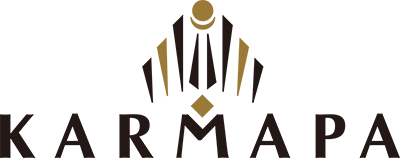Buddhism in Tibet
Buddhadharma or Buddhism began to come to Tibet sometime in the seventh century during the time of King Songtsen Gampo. In the eighth century, Buddhism began to take root in Tibet, during the time of King Trisong Detsen. Acharya Padmasambhava and Abbot Shantirakshita helped the King to bring dharma to Tibet and translate the teachings into the Tibetan language.
The lineages of Buddhism were transmitted to Tibet through many centuries and gradually developed into eight streams or lines of transmission, from teachers to students, eight major practice lineages known as the “Eight Great Chariots” or the “Eight Practice Lineages.”
Over the centuries, the Buddhism of Tibet developed into four main streams or lineages known as the “Four Major Schools of Tibetan Buddhism.”
All Tibetan Buddhist schools and practice traditions trace their origin directly back to Buddha Sakyamuni. In addition, each school traces its founding in Tibet to a particular person, who in turn is connected to a particular tradition in India.
THE NYINGMA SCHOOL OF TIBETAN BUDDHISM
The Nyingma school traces its origins back to the Buddha Samantabhadra, Vajrasattva, and Garab Dorje of Uddiyana. The most important source of the Nyingma order is the Indian Guru, Padmasambhava, the founder of the Nyingma Lineage of Tibetan Buddhism, who came to Tibet in the eighth century C.E. More on the Nyingma school of Tibetan Buddhism
THE KAGYU SCHOOL OF TIBETAN BUDDHISM
The most important source of the Kagyu order is traced back to the great Indian yogi Tilopa (988-1069), one of the 84 mahasiddhas of India, who first developed the spontaneous insight. He gained this realization through the methods that were taught by the historical Buddha Shakyamuni to his closest students, methods that continued to be practiced during the time of Tilopa. In turn, the realization or these masters was passed down to their disciples through the great forefathers of the lineage: Indian mahasiddha Naropa, Marpa-the great translator (1012-1097), Milarepa-the greatest yogi of Tibet, and then to Gampopa-whose coming was prophesied by the Buddha. More on the Kagyu school of Tibetan Buddhism
THE SAKYA SCHOOL OF TIBETAN BUDDHISM
The most important source of the Sakya order is the great Indian yogi Virupa (9th century), one of the 84 Mahasiddhas and foremost in miraculous attainments, through Gayadhara (994-1043) to his Tibetan disciple, Drokmi Lotsawa Shakya Yeshe (992-1072). Drokmi Lotsawa passed the lineage to his main disciple, Khön Könchok Gyalpo (1034-1102), who built the great monastery in the Tsang region of central Tibet. This area had lots of gray earth, for which reason this seat later known as the Sakya “Gray Earth.” More on the Sakya school of Tibetan Buddhism
THE GELUK SCHOOL OF TIBETAN BUDDHISM
The Geluk school continues the distinctive traditions of the Kadampa school of the great Indian master Atisha (982-1054). The Geluk school was founded by the Tibetan master, Je Tsongkhapa Lobsang Drakpa (1357-1419), otherwise known as Je Rinpoche. Ganden Monastery, founded by Tsong Khapa in 1409 C.E. outside Lhasa, the capital of Tibet, became the main seat of the Geluk tradition. The name of this lineage is derived from the name of the monastery that Tsongkhapa founded. More on the Geluk school of Tibetan Buddhism
THE EIGHT CHARIOTS
The practice of Buddhism in Tibet is also divided into the eight major practice traditions called in Tibet the Eight Chariots of the Practice Lineages of Tibetan Buddhism. The Eight Chariots, or conveyances, refer to the eight major practice lineages of Tibetan learning and attainment, traditions which can be traced directly back through the centuries of the history of Tibet and beyond that into India. These traditions encompass the major schools and lineages within Tibet. More on the Eight Chariots
THE TEN PILLARS
The Tibetans most responsible for the establishment of Buddhism in Tibet are called the Ten Pillars.


